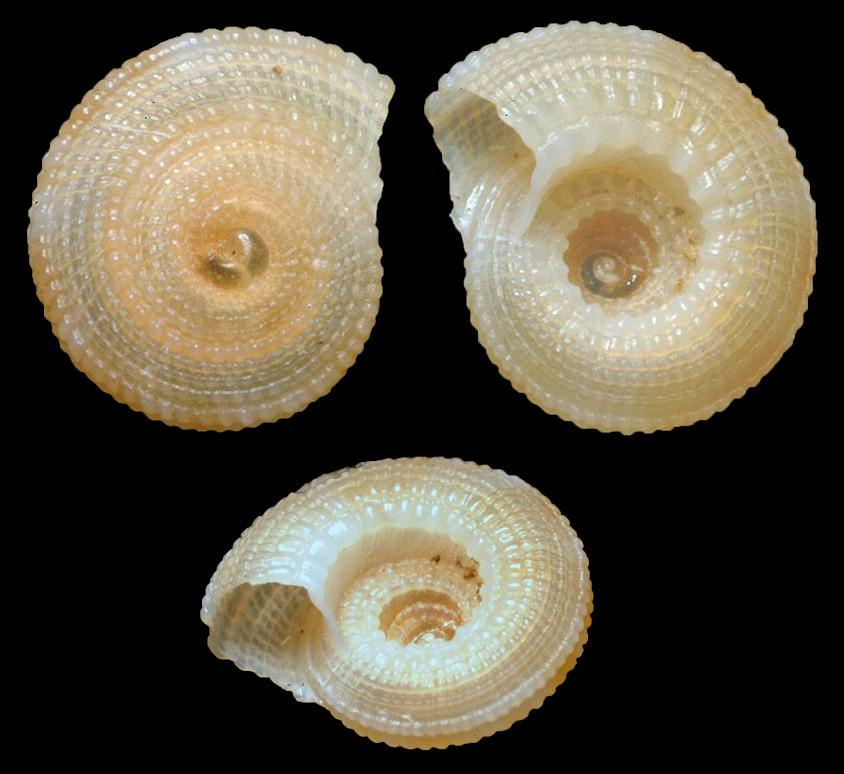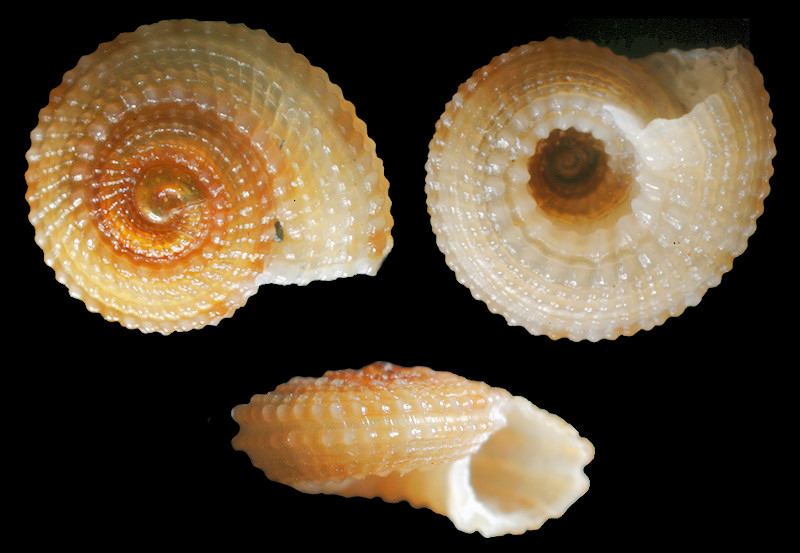|
Heliacus bisulcatus (d’Orbigny, 1842) Beaded Sundial |
| Note the characteristic hyperstrophic (pseudosinistral) protoconch coiling counterclockwise in the center of the umbilicus. The direction of helical growth, or chirality, as it is called, changes once the larva settles. Thence the adult shell (teleoconch) begins to grow along an axis 180 degrees opposite that of the protoconch - a process called coaxial heterostrophy. The outcome is a dextral shell with dextral organization of the internal organs. Such an embryonic history is considered to be a characteristic acquired early in the evolution of the Gastropoda, and it sets the superorder Heterobranchia (Architectonicidae, Ebalidae, Mathildidae, Omalogyridae, Pyramidellidae, Rissoellidae, Valvatidae, etc.) apart from other prosobranchs. |
|
|
|
Beach drift, Dania, Florida (4 mm.). Digital images by David Kirsh. |
|
|
|
Calabash Bay, St. Elizabeth Parish, Jamaica (3 mm.). Digital images by David Kirsh. |

